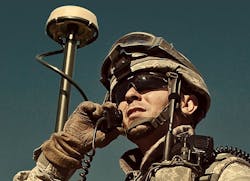Air Force eyes embedded computing and sensors to enhance networking for command and control
Officials of the Air Force Research Laboratory Information Directorate in Rome, N.Y., released a broad agency announcement Friday (BAA-AFRL-RIK-2015-0007) for the Improved Networking Through Embedded Processing and Sensing project, which seeks to enhance warfighter capabilities in command and control.
This program will use embedded sensors and computing provide military network enhancements to enable warfighters to adapt to and operate in contested, congested, or intermittent communications conditions.
The idea is to provide an infrastructure that can extend to all levels of the battlespace involving legacy, current, and next-generation communications technologies to improve communications network resiliency problems.
The effectiveness of the enhancements to software, systems, and sensors currently in operational use will be assessed through testing and evaluation activities. Technology innovations that deliver new or improved operational capabilities are of high interest. Offerors are encouraged to describe the pre-conditions that are necessary for the proposed techniques to work effectively.
Related: The future of high-performance embedded computing
The Air Force is interested in research involving networking sensing technologies; network embedded processing; and distribution control.
Network sensing technologies involves methods, models, and semantics for interoperability and integration across heterogeneous systems; methods for sensing and data processing that enable wired and wireless networks to self-organize into a distributed network topology; and ways to improve the performance of interconnected sensors, actuators, and component networks.
Network embedded processing involves information management capabilities at several different Open System Interconnection (OSI) layers to integrate different protocols; models and algorithms that optimize in-network processing; and hardware and software testing.
Distributed control will integrate and test cyber warfare and knowledge management technologies; enable the switch of data-sharing and collaboration frameworks across the government; develop systems management technologies for command-and-control architectures; and develop network architectures for planning strike, intelligence, surveillance, recognizance (ISR) and electronic warfare (EW) missions.
Total funding will be about $49.2 million over the next five years. Companies interested should submit white papers no later than 30 Oct. 2015 by email to the Air Force's Capt. Richard Newkirk at [email protected], or by post to AFRL/RITF, 525 Brooks Road, Rome NY 13441-4505, and reference BAA-RIK-15-0007.
For technical questions contact Capt. Richard Newkirk by email at [email protected], or by phone at 518-275-3355.
For contracting questions contact the Air Force's Gail Marsh by email at [email protected], or by phone at 315-330-7518.
More information is online at https://www.fbo.gov/spg/USAF/AFMC/AFRLRRS/BAA-AFRL-RIK-2015-0007/listing.html.
